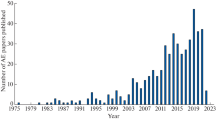Abstract
In order to get a deep understanding of composite failure mechanisms, the new advanced signal processing methodologies are established for the analysis of the large number of acoustic emission (AE) data obtained from the quasi-static tension test of carbon fiber twill weave composite. For this purpose, AE signals have been collected and post-processed for tension test, and are analyzed with three signal processing methods: Empirical Mode Decomposition (EMD), Hilbert-Huang Transform (HHT) and modified energy entropy algorithm. AE signals can be decomposed into a set of Intrinsic Mode Functions (IMF) components, results from this study reveal that the peak frequency of IMF components based on Fast Fourier Transform (FFT) corresponds to different damage mechanisms of composite. HHT of AE signals can clearly express the frequency distribution of IMF component in time-scale in different damage stages, and can calculate accurate instantaneous frequency for damage modes recognition. The energy entropy based on EMD is introduced to act as a new relevant descriptor of composite damage modes in order to improve the characterization and the discrimination of the damage mechanisms.
Similar content being viewed by others
References
Hugueta S, Godina N, Gaertnera R, et al. Use of acoustic emission to identify damage modes in glass fibre reinforced polyester. Compos Sci Technol, 2002, 62(10): 1433–1444
Berthelot J M, Rhazi J. Acoustic emission in carbon fibre composites. Compos Sci Technol, 1990, 37(4): 411–428
Godina N, Hugueta S, Gaertnera R, et al. Clustering of acoustic emission signals collected during tensile tests on unidirectional glass/polyester composite using supervised and unsupervised classifiers. NDT&E Int, 2004, 37(4): 253–264
Morscher G N, Martinez-Fernandez J, Purdy M J. Determination of interfacial properties using a single-fiber microcomposite test. J Am Ceram Soc, 1996, 79(4): 1083–1091
Oskouei A R, Ahmadi M, Hajikhani M. Wavelet-based acoustic emission characterization of damage mechanisms in composite materials under mode I delamination at different interfaces. Express Polym Lett, 2009, 3(12): 804–813
Ni Q Q, Iwamoto M. Wavelet transform of acoustic emission signals in failure of model composites. Eng Fract Mech, 2002, 69(6): 717–728
Sung D U, Kim C G, Hong C S. Monitoring of impact damages in composite laminates using wavelet transform. Composites, Part B, Eng, 2002, 33(1): 35–43
Loutas T H, Kostopoulos V, Ramirez-Jimenez C, et al. Damage evolution in center-holed glass-polyester composites under quasi-static loading using time-frequency analysis of acoustic emission monitored waveforms. Compos Sci Technol, 2006, 66(10): 1366–1375
Surgeon M, Wevers M. Modal analysis of acoustic emission signals from CFRP laminates. NDT&E Int, 1999, 32(6): 311–322
Gorman M R, Ziola S M. Plate waves produced by transverse matrix cracking. Ultrasonics, 1991, 29(3): 245–251
Prosser W H, Jackson K E, Kellas S, et al. Advanced,waveform based acoustic emission detection of matrix cracking in composites. Mater Eval,1995, 53(9): 1052–1058
deGroot P J, Wijnen P A M. Real-time frequency determination of acoustic emission for different fracture mechanisms in carbon/epoxy composites. Compos Sci Technol, 1995, 55(4): 405–412
Ramirez-Jimenez C R, Papadakis N, Reynolds N, et al. Identification of failure modes in glass/polypropylene composites by means of the primary frequency content of the acoustic emission event. Compos Sci Technol, 2004, 64(12): 1819–1827
Gutkin R, Green C J, Vangrattanachai S, et al. On acoustic emission for failure investigation in CFRP:Pattern recognition and peak frequency analyses. Mech Syst Signal Proc, 2011, 25(4): 1393–1407
Arumugam V, Sajith S, JosephStanley A. Acoustic emission characterization of failure modes in GFRP laminates under mode I delamination. J Nondestruct Eval, 2011, 30(3): 213–219
Moevus M, Godin N, RMili M, et al. Analysis of damage mechanisms and associated acoustic emission in two SiCf/[Si-B-C] composites exhibiting different tensile behaviours. Part II. Unsupervised acoustic emission data clustering. Compos Sci Technol, 2008, 68(6): 1258–1265
Oliveira R de, Marques A T. Health monitoring of FRP using acoustic emission and artificial neural networks. Comput Struct, 2008, 86(3-5): 367–373
Godin N, Huguet S, Gaeertner R. Integration of the kohonens self-organizing map and k-means algorithm for the segmentation of the AE data collected during tensile tests on cross-ply composites. NDT&E Int, 2005, 38(4): 299–309
Pashmforoush F, Fotouhi M, Ahmadi M. Damage characterization of glass/epoxy composite under three-point bending test using acoustic emission technique. J Mater Eng Perform, 2011, 21(7):1380–1390
Loutas T H, Kostopoulos V, Ramirez-Jimenez C, et al. Damage evolution in center-holed glass/polyester composites under quasi-static loading using time/frequency analysis of acoustic emission monitored waveforms. Compos Sci Technol, 2006, 66(10): 1366–1375
Marec A, Thomas J H, Guerjouma R El. Damage characterization of polymer-based composite materials: multivariable analysis and wavelet transform for clustering acoustic emission data. Mech Syst Signal Proc, 2008,22 (6): 1441–1464
Norden E, Huang M C, Long S R, et al. A confidence limit for the empirical mode decomposition and Hilbert spectrum analysis. Proc R Soc Lond A, 2003, 459(4): 2317-345
Dongyang D, Yingkai Z. Application of ensemble empirical mode decomposition in failure analysis of rotating machinery. Trans CSAE, 2010, 26(2): 190–196
Author information
Authors and Affiliations
Corresponding author
Rights and permissions
About this article
Cite this article
Han, W., Zhou, J. Acoustic emission characterization methods of damage modes identification on carbon fiber twill weave laminate. Sci. China Technol. Sci. 56, 2228–2237 (2013). https://doi.org/10.1007/s11431-013-5296-0
Received:
Accepted:
Published:
Issue Date:
DOI: https://doi.org/10.1007/s11431-013-5296-0




